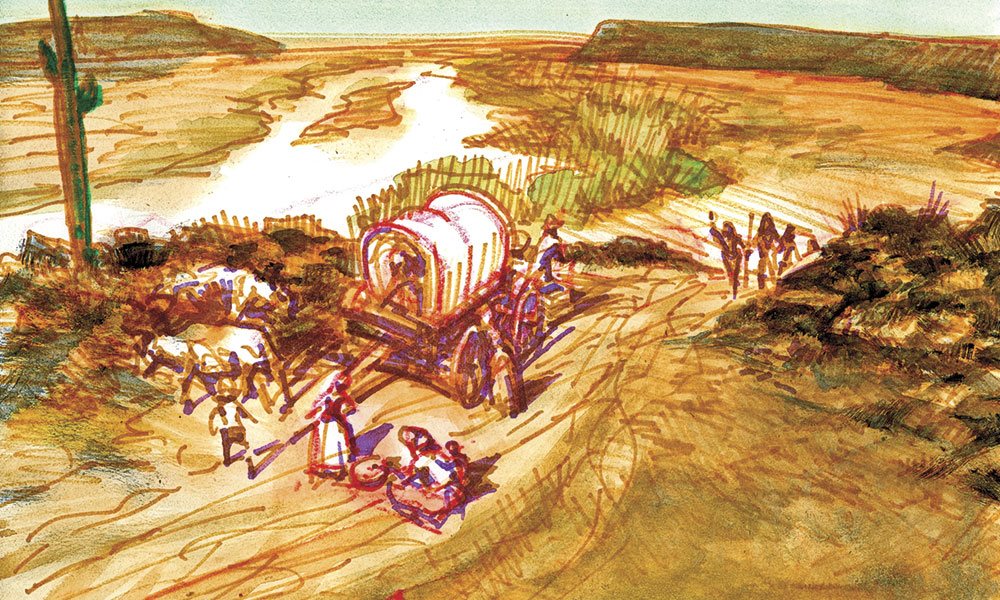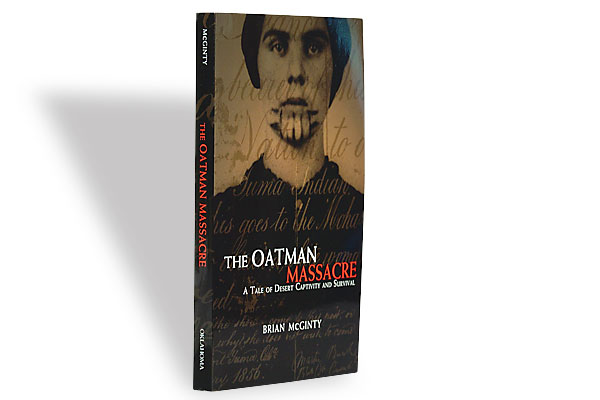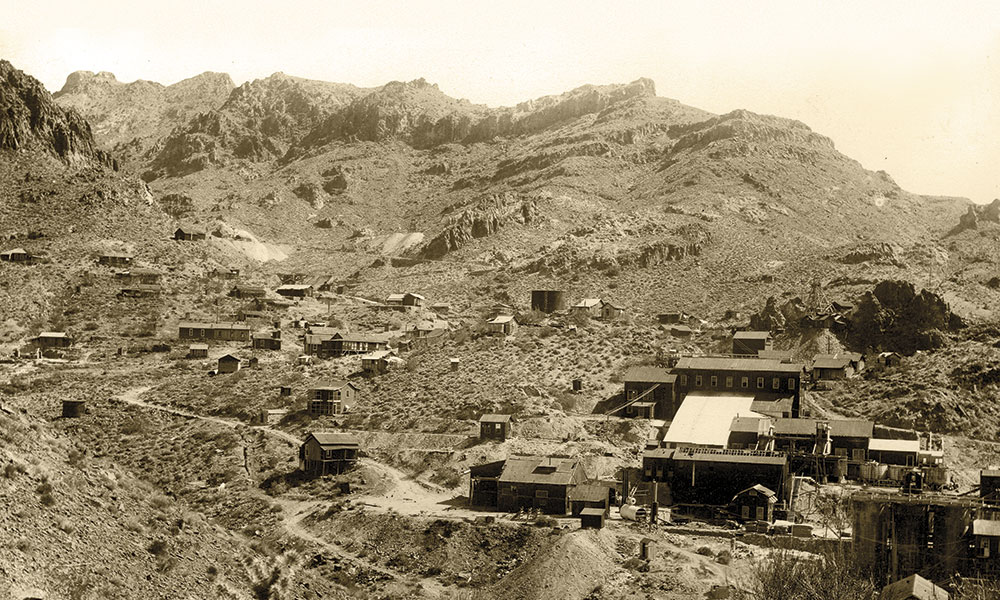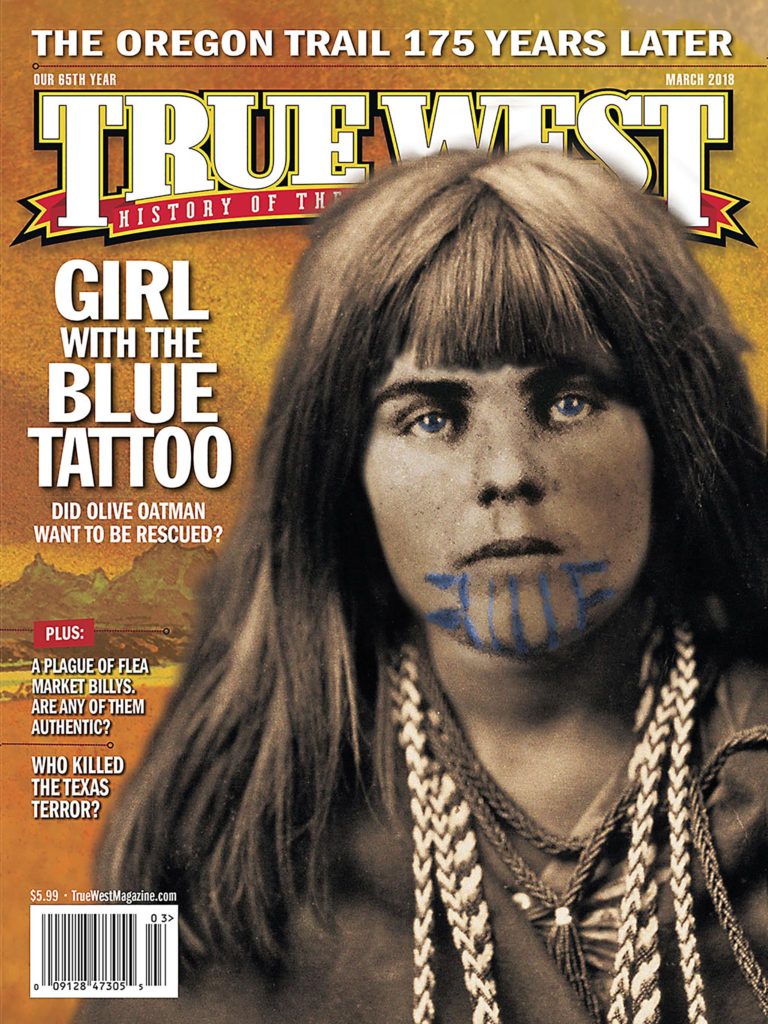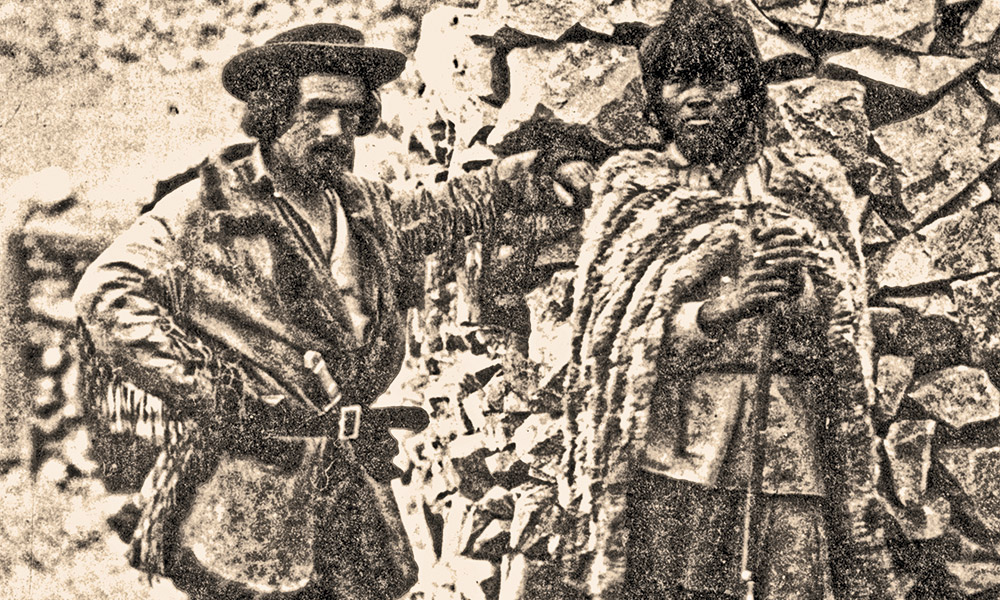
— True West Archives —
Did John Moss, friend of Mohave leader Irataba, name the Oatman mine and, hence, the town after Olive Oatman? Or was the town originally called Vivian and renamed Oatman in Olive’s honor? Or was it named after himself by Olive’s alleged half-Mohave son?
The answer is “none of the above.”
Though these stories have circulated for decades, and are found in reputable sources, including Will C. Barnes’s Arizona Place Names and Byrd Howell Granger’s Arizona’s Names: X Marks the Place, they are untrue.
The town’s name comes from the nearby Olla Oatman Mine, which was located in 1900 by Eli Hilty, Joe B. Anderson, Walter Hawkins and Dubois Tooker. The mine acquired its name from the nearby Olla Oatman Spring and was one of a group of claims, including the Thos. B. Reed and Benjamin Harrison claims. This eliminates John Moss, who prospected the area in the 1860s, as he died 20 years earlier.
In 1901, Ben Paddock discovered the Vivian mine two miles to the west. Folks claimed the mine was discovered by a half-Mohave, which may be how Olive’s alleged half-Mohave son ended up getting credit, but Paddock was actually a half-Chemehuevi who lived among the Mohaves on the reservation along the Colorado River. The community of Vivian, which received its post office in 1904, developed around the Vivian and adjacent mines. Two miles away, the Oatman camp began near the Olla Oatman Mine and soon surpassed the Vivian camp in size. In 1909, the U.S. Postal Service moved the post office from Vivian to Oatman, leading to the oft-repeated story that the town of Vivian was renamed Oatman.
The Olla Oatman Spring was seldom referenced in early texts, except to acknowledge it as the location where a young white girl was held captive by Indians until being rescued, and that story, with variations, came later. Though Olive’s popularity may have been equal to that of the celebrities the other claims were named for—9th U.S. President William Henry Harrison and Maine Congressman Thomas Brackett Reed—the historical record is unclear as to why the name Olla was used instead of Olive.
The Mohave County Miner called it the Olive Oatman Mine in 1901, but in 1902, when the partners sold their claims, the name Olla almost immediately gave way to Ollie—not Olive—on both the mining claim and its namesake spring. In 1916, newspapers began printing stories about Olive Oatman’s life in captivity at the spring, which led to a site visit, in 1926, by Olive’s great-nephew Roy Fairchild Oatman.
The legend that Olive’s alleged half-Mohave son named Oatman after himself also rings false. Oatman reporter Robert Shaw Doman probably heard this name origin rumor—which folks got mixed up with the Vivian mine founder, who was not a half-Mohave—and fabricated a 1920s divorce tale involving an imagined grandson he called John Oatman (see Unsung, p. 44).
The truth is the town of Oatman was named for a mine which was named for a spring where Olive Oatman was reportedly held in captivity.
Friend of the Mohaves
John Moss appeared in California before the Civil War and devoted 20 years to exploring and prospecting the Southwest. While a few of his self-reported exploits—solo rafting down the Colorado River and locating precious gems in the Four Corners—were fictitious, he forged positive relationships with the native population, including Irataba, who traveled to the East with him in 1864. Olive Oatman met with the Mohave chief during her lifetime, so a tenuous connection could be threaded between Moss and Olive. Yet he is not the likely source behind the Oatman town name.
A historian and cultural resource advocate, Vince Murray is an Arizona native from a pioneer family. He has a master’s degree in Public History from Arizona State University. The president of the Coordinating Committee for History in Arizona, he owns Arizona Historical Research, a consulting firm in Phoenix.

